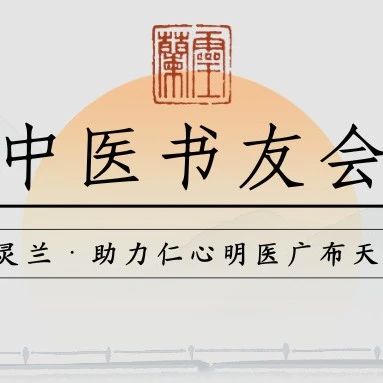
Chinese Medicine Book Club Issue 2239
One issue daily, accompanying the growth of TCM practitioners
IIntroduction: 20 centipedes, yes, you read that right. Teacher Song Baishan explained why centipedes dispel wind. Don’t you think centipedes look like the human spine? (Editor/Wang Chao)

Experience in Using Centipede and Chicken Dung to Treat Tetanus
Author/Zhou Jianan
Case 1: Liu, male, 42 years old, farmer. On April 18, 1963, the patient accidentally injured the outer side of his right little toe while lifting a water tank with fellow villagers, resulting in a wound the size of a dumpling, with approximately 50 mL of blood loss, and was treated conventionally at the commune hospital.
On the 24th, he began to experience chills, body aches, back stiffness, and tightness in the jaw, and urgently went to the hospital for medication and injections (medication names unspecified). By the 27th, his symptoms worsened, with a tight jaw making it difficult to ingest soup, and he experienced convulsions. After further diagnosis and treatment, his condition rapidly deteriorated, with increased convulsions, leading to an emergency admission for “tetanus”.
Examination: Acute illness with a pained expression, tight jaw, difficulty eating, stiff neck and back, opisthotonos, generalized muscle spasms occurring every 3-5 minutes, profuse sweating, clothes soaked, body temperature 39.8°C, dark yellow urine, and constipation for 4 days, pulse rapid and forceful.
This indicates severe Yangming heat and erratic wind-phlegm movement. Treatment aimed to clear heat and drain fire, calm wind and relieve spasms, using a modified Bai Hu Tang (White Tiger Decoction): 62g Shi Gao (Gypsum), 12g Zhi Mu (Anemarrhena), 12g Da Huang (Rhubarb), 10g Quan Xie (Scorpion), 10g Chan Tui (Cicada Slough), 10g Ji Shi Bai (Chicken Dung, dried and powdered for ingestion), 20 centipedes, and 6g Gan Cao (Licorice).
Second examination (April 29): The patient’s jaw was slightly less tight, convulsion frequency decreased, and sweating reduced, but he still had not defecated. Continued with the previous formula, increasing Da Huang to 18g (soaked for ingestion).
Third examination (May 2): The patient had defecated, passing foul-smelling, turbid matter multiple times, jaw tightness was mostly relieved, and he could chew. However, he still had a fever, with a body temperature of 38°C; the tongue was red, and the pulse was weak and rapid.This indicates heat injuring Qi and Yin, with residual toxins.
Proposed Zhu Ye Shi Gao Tang (Bamboo Leaf and Gypsum Decoction) modified: 12g Dan Zhu Ye (Bamboo Leaf), 31g Shi Gao (Gypsum), 15g Tai Zi Shen (Pseudostellaria), 18g Mai Dong (Ophiopogon), 15g Yin Hua (Honeysuckle), 12g Lian Qiao (Forsythia), 15g Hua Fen (Pollen), and 10g Ji Shi Bai (Chicken Dung, for ingestion).
Fourth examination (May 5): All symptoms resolved, the patient moved freely, and had normal eating and sleeping patterns. Due to slight low fever, continued with the previous formula for 2 more doses. Total hospitalization was 10 days, and the patient was discharged cured.
Case 2: Luo, female, 28 years old, farmer. Seven days postpartum, she suddenly experienced throat pain and difficulty swallowing, without taking any medication. The next day, she began to have spasms and convulsions. After treatment at a local hospital, taking both TCM and Western medications was ineffective, and she developed stiff neck and back, rigidity in limbs, tight jaw, muscle spasms, high fever, and sweating, leading to an emergency admission for “tetanus”. After administering tetanus antitoxin and symptomatic treatment, her symptoms persisted, prompting a consultation on June 16, 1963.
Examination: Acute illness with a pained expression, tight jaw, difficulty eating, stiff neck, abdominal muscles rigid, and full-body spasms occurring approximately every 10 minutes, fever and thirst, with rattling phlegm in the throat; the tongue tip had bite marks, tongue was red, thin yellow coating, and pulse was rapid and forceful. This indicates toxic heat accumulation and internal wind-phlegm movement.
Treatment should focus on clearing heat and detoxifying, calming wind and relieving spasms. The formula used was Yu Zhen San (Precious True Powder) modified: 12g Fang Feng (Siler), 10g Nan Xing (Arisaema), 12g Tian Ma (Gastrodia), 12g Chan Tui (Cicada Slough), 10g Quan Xie (Scorpion), 20g Wu Gong (Centipede), 15g Jiang Can (Silkworm), 18g Yin Hua (Honeysuckle), 15g Lian Qiao (Forsythia), 15g Gan Cao (Licorice), and 10g Ji Shi Bai (Chicken Dung, roasted, powdered for ingestion). Acupuncture was applied to Baihui (GV20), Jiachuan (ST6), Hegu (LI4), and Taichong (LR3) points, using a draining technique and leaving the needles for 15 minutes.
Second examination (June 17): After taking the formula, the symptoms stabilized, but she still had convulsions and was somewhat unclear in consciousness. Continued with the previous formula, administering 3 doses of Zi Xue Dan (Purple Snow Pill). Acupuncture was applied to Shaoshang (LU11), Dica (ST4), Hegu (LI4), and Fenglong (ST40) points, with the same technique as before.
Third examination (June 18): The tight jaw was relieved, consciousness improved, convulsion frequency decreased, but she still experienced thirst and restlessness, with a lot of phlegm. This indicates phlegm-heat obstructing the lungs, with abnormal clearing and dispersing, and advised not to disturb her. Stopped acupuncture, continued with the original formula, removing Fang Feng and Nan Xing, and adding 6g Huang Lian (Coptis) and 10g Bei Mu (Fritillaria), with the same method of administration as before. (Selected from Zhou Jianan’s medical cases)
Recommended Reading
Seeing patients with tetanus on the verge of death, the old gentleman could still save seven or eight out of ten.
Li Shimao: Centipedes are non-toxic; for treating liver wind, a large dosage is required.
|
I Copyright Statement
I Submission Email [email protected] |
Song Baishan’s Clinical Insights on “Jin Gui” are here!!
25 original texts analyzed sentence by sentence, 40 diseases analyzed one by one, over 200 formulas applied one by one, and the pulse patterns of Zhang Zhongjing explained to you.
Over the course of a year, we plan to exceed 100 lectures, updating weekly, covering everything from daily life to clinical practice, from thinking to methods. We will do our utmost to assist you in understanding Jin Gui and applying it clinically! Currently, nearly 800 people have joined the learning. Click here for course details


This course, once subscribed, is valid indefinitely, allowing you to learn anytime, anywhere!

Click to read the original text and watch more free content on “Song Baishan’s Clinical Insights on Jin Gui”

